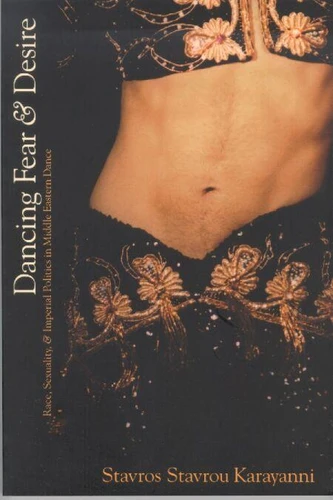Dancing Fear and Desire. Race, Sexuality, and Imperial Politics in Middle Eastern Dance
Par :Formats :
Disponible dans votre compte client Decitre ou Furet du Nord dès validation de votre commande. Le format ePub est :
- Compatible avec une lecture sur My Vivlio (smartphone, tablette, ordinateur)
- Compatible avec une lecture sur liseuses Vivlio
- Pour les liseuses autres que Vivlio, vous devez utiliser le logiciel Adobe Digital Edition. Non compatible avec la lecture sur les liseuses Kindle, Remarkable et Sony
 , qui est-ce ?
, qui est-ce ?Notre partenaire de plateforme de lecture numérique où vous retrouverez l'ensemble de vos ebooks gratuitement
Pour en savoir plus sur nos ebooks, consultez notre aide en ligne ici
- Nombre de pages264
- FormatePub
- ISBN978-1-55458-719-3
- EAN9781554587193
- Date de parution03/08/2009
- Protection num.Digital Watermarking
- Taille3 Mo
- Infos supplémentairesepub
- ÉditeurWilfrid Laurier University Press
Résumé
Throughout centuries of European colonial domination, the bodies of Middle Eastern dancers, male and female, move sumptuously and seductively across the pages of Western travel journals, evoking desire and derision, admiration and disdain, allure and revulsion. This profound ambivalence forms the axis of an investigation into Middle Eastern dance-an investigation that extends to contemporary belly dance.
Stavros Stavrou Karayanni, through historical investigation, theoretical analysis, and personal reflection, explores how Middle Eastern dance actively engages race, sex, and national identity. Close readings of colonial travel narratives, an examination of Oscar Wilde's Salome, and analyses of treatises about Greek dance, reveal the intricate ways in which this controversial dance has been shaped by Eurocentric models that define and control identity performance.
Stavros Stavrou Karayanni, through historical investigation, theoretical analysis, and personal reflection, explores how Middle Eastern dance actively engages race, sex, and national identity. Close readings of colonial travel narratives, an examination of Oscar Wilde's Salome, and analyses of treatises about Greek dance, reveal the intricate ways in which this controversial dance has been shaped by Eurocentric models that define and control identity performance.
Throughout centuries of European colonial domination, the bodies of Middle Eastern dancers, male and female, move sumptuously and seductively across the pages of Western travel journals, evoking desire and derision, admiration and disdain, allure and revulsion. This profound ambivalence forms the axis of an investigation into Middle Eastern dance-an investigation that extends to contemporary belly dance.
Stavros Stavrou Karayanni, through historical investigation, theoretical analysis, and personal reflection, explores how Middle Eastern dance actively engages race, sex, and national identity. Close readings of colonial travel narratives, an examination of Oscar Wilde's Salome, and analyses of treatises about Greek dance, reveal the intricate ways in which this controversial dance has been shaped by Eurocentric models that define and control identity performance.
Stavros Stavrou Karayanni, through historical investigation, theoretical analysis, and personal reflection, explores how Middle Eastern dance actively engages race, sex, and national identity. Close readings of colonial travel narratives, an examination of Oscar Wilde's Salome, and analyses of treatises about Greek dance, reveal the intricate ways in which this controversial dance has been shaped by Eurocentric models that define and control identity performance.



